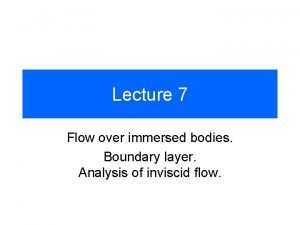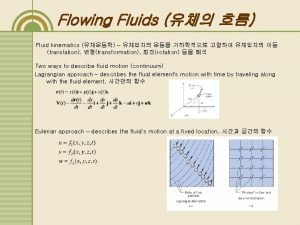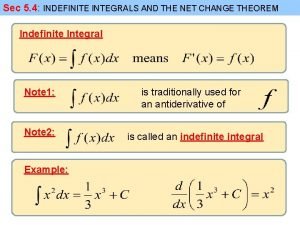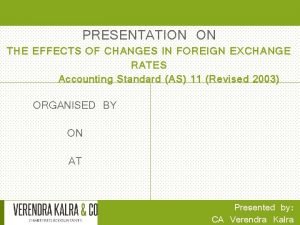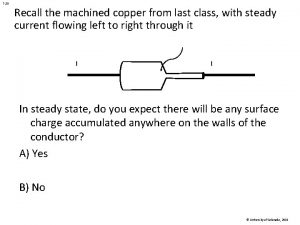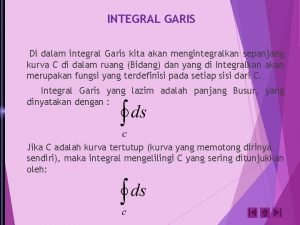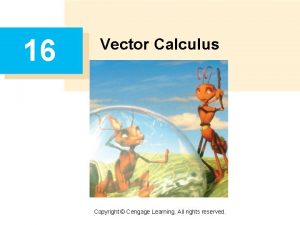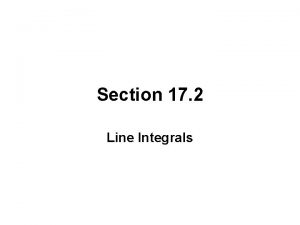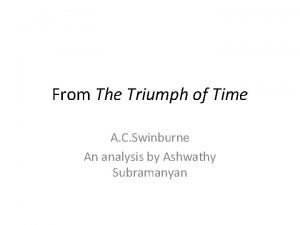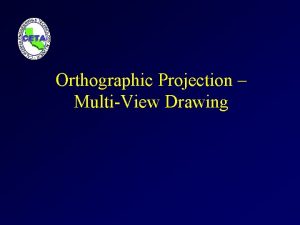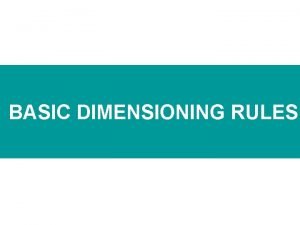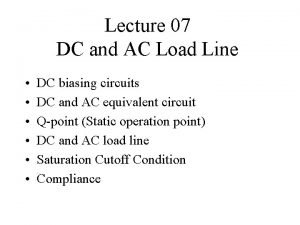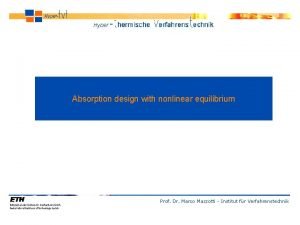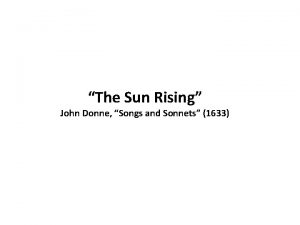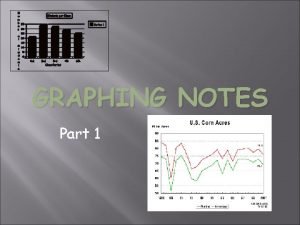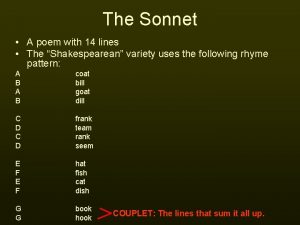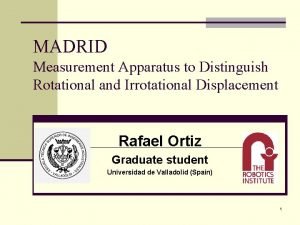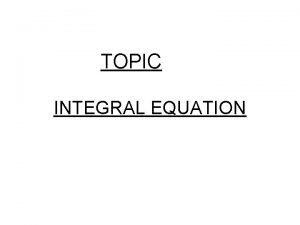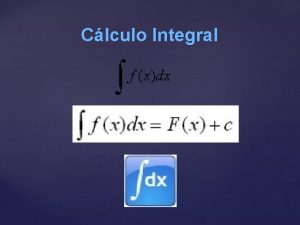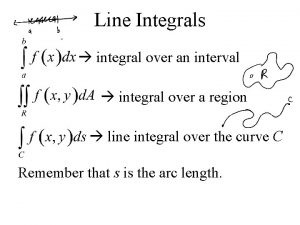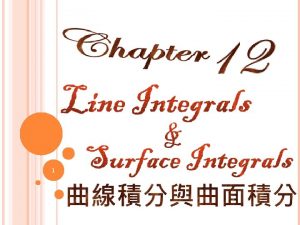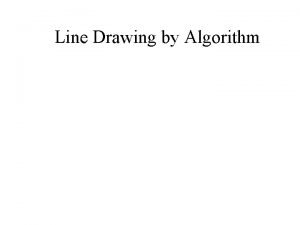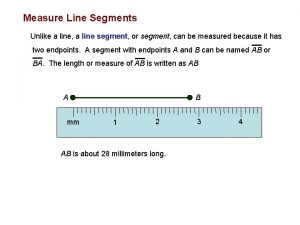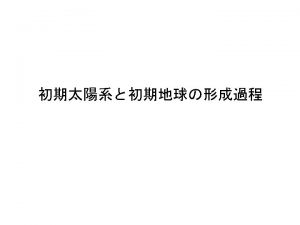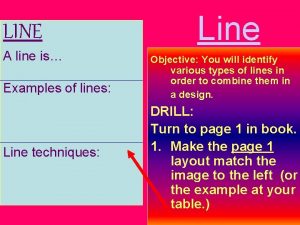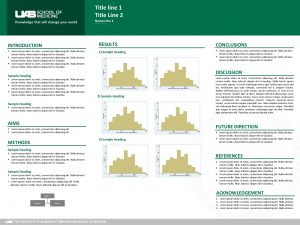Line Integral II Line integral in an irrotational




























- Slides: 28

Line Integral II • Line integral in an irrotational vector field • Green’s theorem

EXAMPLE Calculate Where C is 1. The part of he circle x 2 + y 2 = 1 that lies in the first quadrant oriented anti-clockwise 2. The line segment between the points [1, 0] and [0, 1] O [1, 0]

1. x 2+y 2=1 2. y = 1– x

The identical results of the above calculations are no coincidence. The reason is that the vector components (f 1(x, y), f 2(x, y)) = (9 x 2 – 2 y + 3, – 2 x – 4) are the partial derivatives by x and y respectively of the function F(x, y) = 3 x 3 – 2 xy + 3 x – 4 y.

Let f(x, y) = ( f 1(x, y), f 2(x, y)) be a vector field with f 1(x, y), f 2(x, y) continuous in a planar area A containing a regular curve C given by the parametric equations x = (t), y = (t), t [a, b] oriented in corespondence with these parametric equations. Let A denote the point [ (a), (a)] and B the point [ (b), (b)]. A function F(x, y) in A such that q F(x, y) has continuous first partial derivatives q is called the potential of the vector field f(x, y)

Let the potential F(x, y) of f(x, y) exist and calculate the line integral of f(x, y) along C: This means that the result only depends on the value of F(x, y) at A and B and is independent of the choice of curve C.

Clearly, a similar result can be obtained for 3 D curves: If F(x, y, z) is a potential of f(x, y, z) so that then for every curve C going from A to B.

Let F(x, y, z) and G(x, y, z) be two potentials of f(x, y, z). Then G(x, y, z)=F(x, y, z) + const

Given the functions f 1(x, y) and f 2(x, y), how can we know that a function F(x, y) exists such that

We have and From what we know about F(x, y), it follows that Thus we can conclude that is a condition necessary for the existence of the function F(x, y). It can be proved that this condition is also sufficient.

In the event of a 3 D curve and a function F(x, y, z), if then clearly

This means that (1) or (2) are conditions necessary for the existence of the function F(x, y). Again, it can be proved that they are also sufficient. Conditions (2) can also be expressed using the following formal calculation.

Suppose that, next to the vector we also have a formal vector This vector is also called the nabla operator. Let us calculate the vector product

Thus the conditions (2) can be written as where 0 is the zero vector.

The vector is called the curl of the vector field f (x, y, z) If the curl of a vector field is the zero vector in an area A, the vector field is said to be irrotational or conservative in A. The line integral of a vector field is independent of the curve along which the endpoint is reached from the starting point exactly if the vector field is irrotational.

If functions f 1(x, y, z), f 2(x, y, z), f 3(x, y, z) are given and we have to find a potential to them if it exists, we do the following: We verify that or and then perform the following calculations:


Example Find a potential to the vector field Solution We have


GREEN’S THEOREM Let f(x, y) = f 1(x, y) i + f 2(x, y) j be a vector field in a planar area M with continuous first order partial derivatives and let L be a closed regular curve in M oriented anticlockwise. Let A denote the planar area bounded by L. Then f 1(x, y) i + f 2(x, y) j A L

y d A R L c O a b x

NOTE From the picture it is clear that the line integrals round all the rectangles of the grid covering the area A add up to the line integral round the thick contour covering A since the line integrals round the inner sides of the rectangle grid are always calculated twice – each time with a different sign. We will now calculate the line integral round the yellow rectangle R in the picture. The line integrals round other rectangles of the grid covering A would be calculated in the same way.

y opposite orientation d R c a b x


Using the Lagrange theorem for both integrals, we can write Finally, using the mean value theorem for integrals, we get

If we calculate IR for every rectangle of the grid covering A and add them up, we get, on the left-hand side of the equation, the line integral of the vector field f 1(x, y) i + f 2(x, y) j round the thick contour in the picture (see the note) and, on the right-hand side, an integral sum lying between the lower and upper integral sums of the double integral Thus, when the norm of the grid tends to zero, this equation tends to what Green’s theorem says.

EXAMPLE Calculate the area of the astroid given by the equations For comparison, the circumscribed red circle has a radius of a

By Green’s theorem, we have Thus the area of the astroid is
 Irrotational flow means *
Irrotational flow means * Flow over immersed bodies
Flow over immersed bodies Irrotational vortex
Irrotational vortex Irrotational flow
Irrotational flow Contoh soal integral permukaan
Contoh soal integral permukaan Displacement integral
Displacement integral Integral foreign operation
Integral foreign operation Integral citation
Integral citation Integral parsial
Integral parsial Non integral citation
Non integral citation Differentiate between plain scale and diagonal scale
Differentiate between plain scale and diagonal scale Line integral
Line integral Line integral convolution
Line integral convolution Line integral of triangle
Line integral of triangle Line integral of vector field
Line integral of vector field Line integral
Line integral How to construct a parallel line
How to construct a parallel line Swinburne
Swinburne What type of drawing do we use miter line?
What type of drawing do we use miter line? Dimension terminology
Dimension terminology The point of intersection of dc and ac load lines is called
The point of intersection of dc and ac load lines is called Out, out analysis
Out, out analysis Operating line and equilibrium line in absorption
Operating line and equilibrium line in absorption Romeo and juliet act 1 prologue modern english
Romeo and juliet act 1 prologue modern english The sun rising analysis
The sun rising analysis Vertical line and horizontal line
Vertical line and horizontal line A short rhyming poem of 14 lines
A short rhyming poem of 14 lines A poem for my mother jennifer davids analysis
A poem for my mother jennifer davids analysis She dwelt among the untrodden ways theme
She dwelt among the untrodden ways theme

